A Reflection on Assessment: My Journey through CEP813
At the heart of assessment is identifying what students know and don’t know and shaping classroom experiences to deepen student learning. I began CEP813 “Electronic Assessment for Teaching and Learning” with this fundamental view. Over the last several months, my understanding of assessments has deepened in exciting and frustrating ways.
I began seeing assessments as thermometers, mirrors, and pageants.
Assessments as thermometers are ways to gauge student understanding and mastery during the process of learning. Much as a Thanksgiving turkey is checked for temperature, smells, sounds, and over-all look, so too is proper formative and summative assessment. The analogy is not perfect. In reality, formative assessment (assessments for learning) are lessons, activities, and tasks through which learning occurs and by which the teacher can measure learning. The latter element is more summative (assessment of learning). In a certain way, all lessons, activities, projects, and tasks have a particular formative and summative element to them. This more sophisticated understanding has come from reading on social constructivism and behaviorism in the first module in CEP813. Seeing learning as an active process through which students construct knowledge together is a challenging process, certainly when it comes to designing learning for this goal. The most central place in which I have grown and will likely be the fundamental transformation in my practice is feedback, as described in model three. One particular reading from Hattie, J. & Timperley, H. (2007) entitled “The Power of Feedback” blew my mind.

I think I read the article at least three times and have shared it with a third of my colleagues. Feedback is everything. It is a critical component of my practice that has been painfully absent. And because my feedback has been so scant, student growth through my assessments has been limited.
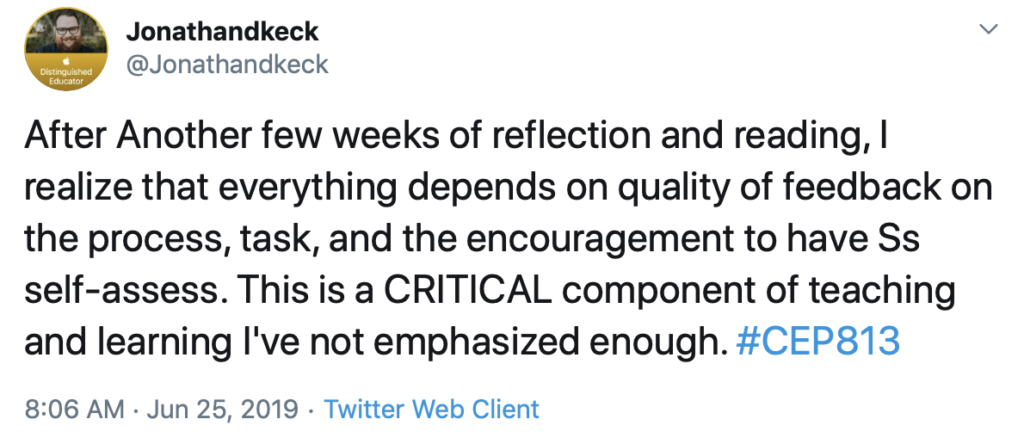
I was continually giving summative assessments and expecting them to memorize and regurgitate, no matter if I had moved away from multiple-choice or not. It was the same philosophy driving me. Moreover, I’ve found through module five that a classroom management system (CMS) can make the quantity demands for quality feedback rather doable—even easy at times. The right tech tools can transform teaching and learning in fundamental and powerful ways. In particular, I found Canvas LMS to be a beneficial tool concerning the realities of classes full of students and hundreds of items to give feedback on.
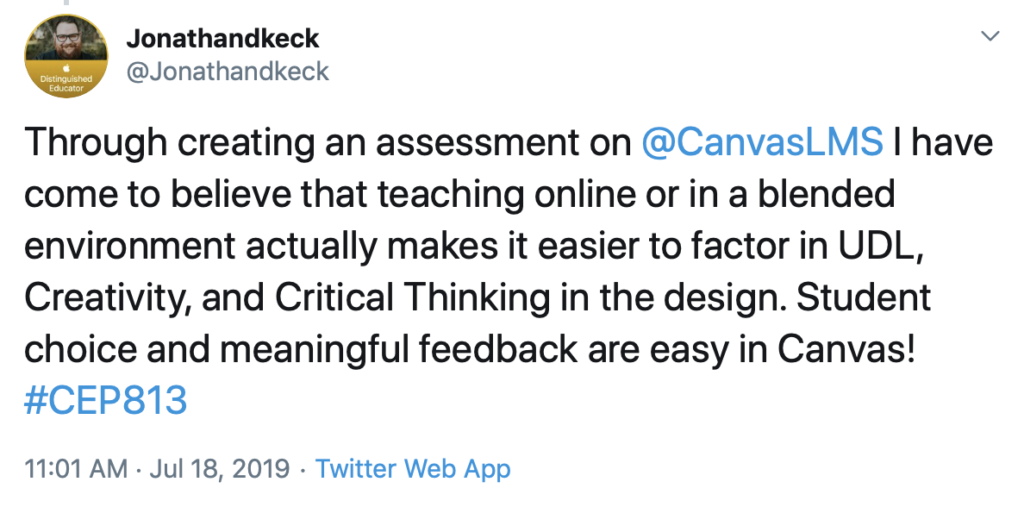
One area that I see productive potential in is digital games used for assessments. Module 6 of CEP813 addressed this concept, and, frankly, it was a difficult one. It was not nearly as fun or as easy as I imagined. I believe games can and will be a powerful method through which my students learn and through which I assess, but I need to think deeply about how it functions more effectively for my goals as an educator. On the whole, my understanding of assessment for formative “checks” and adjustments has taken on a rich, complex character.
Assessments as mirrors are the opportunities students have for metacognitive reflection on their understanding, strengths, and growth areas. Months ago, I imagined helping students look themselves in an internal cognitive mirror to assess themselves. I still believe this is a fundamental aspect of the assessment. Where I have grown in this understanding is from Hattie & Timperley (2007) on moving students into self-regulation. I want to develop active learning and promote self-regulation in a problem-based, project-based learning environment. Promoting self-regulation through quality feedback will be crucial to this development. As introduced to my peers and me in module 4, digital portfolios can be an incredible tool for metacognition and summative assessment. Having students reflect on their learning, review their work, and construct a portfolio or showcase demonstrating their learning is a powerful act of self-awareness. Indeed, having students indicate areas of growth and “what’s next” in a portfolio is essential to overall learning and growing beyond the classroom.
Assessments as pageants are demonstrations of learning, like my kindergarten-lion-tamer-circus showcase. I had learned a lot about tigers and lion tamers, and we put on a big exhibition where my classmates and I acted like animals and keepers. It was cute, I am sure. But I doubt that this “assessment” was an excellent example of my learning—not that any of the picture-snapping parents cared at that moment. Summative assessments are activities, tasks, and assignments through which a teacher assesses the already-acquired knowledge or skill of the student. Constructing this assessment is central to all other designed learning before this showcase. As described in module two in CEP813, building toward this goal is central to the Understanding by Design (UBD) approach.
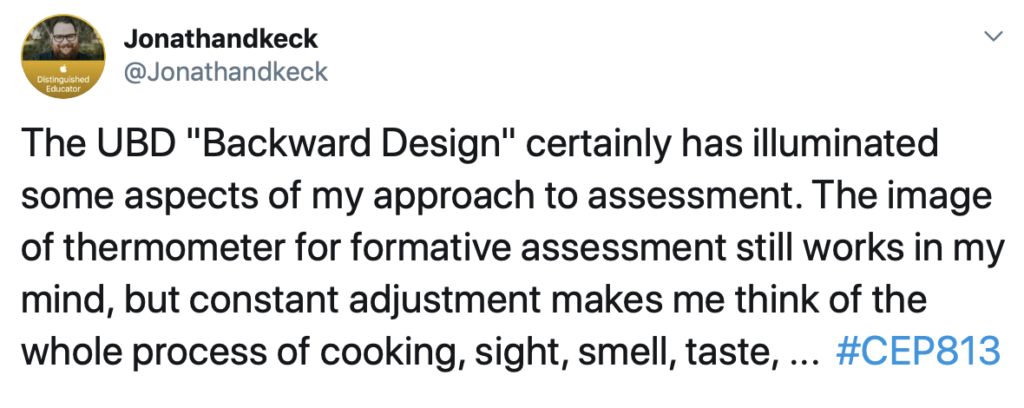
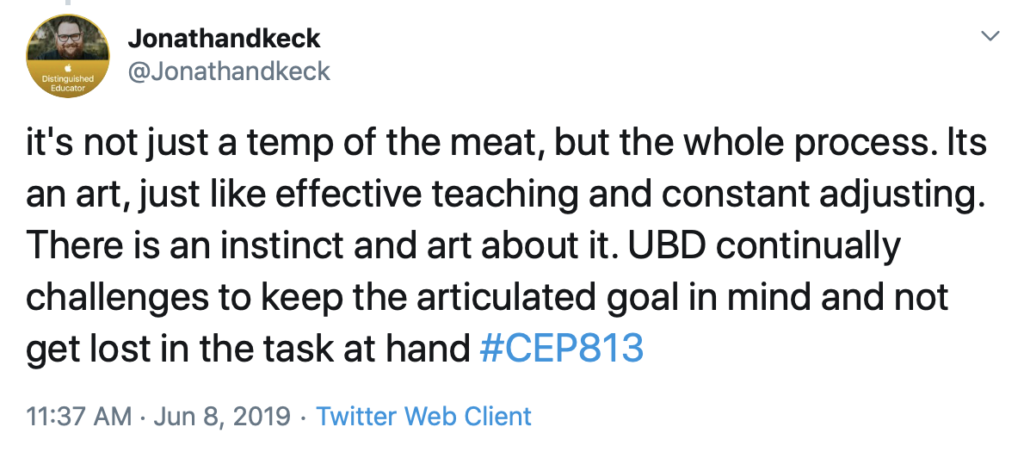
Ultimately, the purpose of any learning is transference into another domain of knowledge. This showcase should confirm and release students into the continued application of the acquired knowledge beyond the classroom. Indeed, UBD and transference are going to be one of a few critical areas of focus this year in my class. I intend to ask myself continually whether this assignment builds toward transference into these students real lives.
This course on Assessments and Technology has been one of the more challenging topics. I believe it has been so because it has challenged many vital aspects of my practice on a fundamental level. It is not just enough to know the theoretical differences between assessment types. I am determined that my student of assessments forces me to rethink and redesign much of what I do daily. Through this course and its various tasks, I have already begun some of this work. One of the assessments that I am most proud of is my design of a learning experience in Canvas LMS. Through it, I created a variety of methods for students to learn the material through some direct instruction or research according to the principles of Universal Design for Learning (UDL).
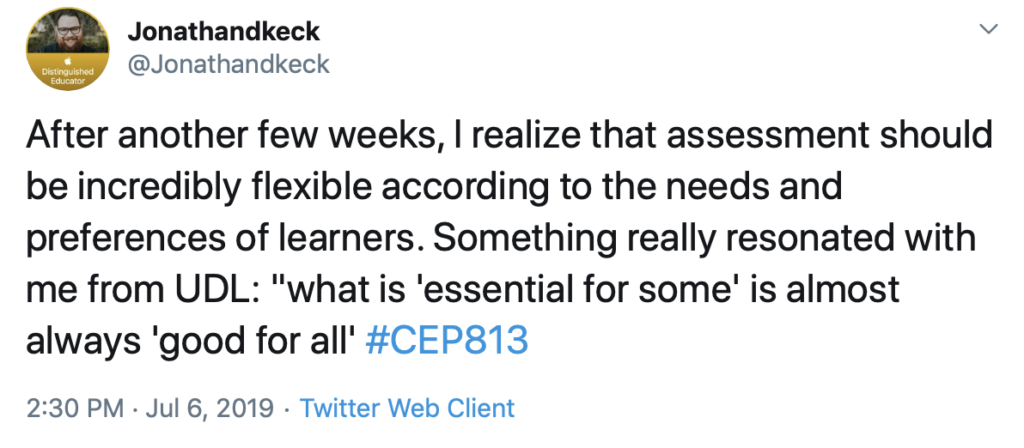
Students also engage in critical thinking discussions with their teacher and each other. Finally, students get to chose how to express their understanding through creativity and making by selecting one of several options. This last creation is an opportunity for quality feedback and iteration for the students. This assessment design was heavily influenced by ideas from all the units covered in the course.
A key area of growth that I will continue to develop further is game-based learning, especially using technology and leveraging authentic learning and assessment. While I believe that my Twine game was creative and focused on the internal grammar of aspects of the content, it fell short on external grammar. Developing a game that can be effectively used for formative assessment and feedback is essential to me and something I want to create and share for those in my discipline.
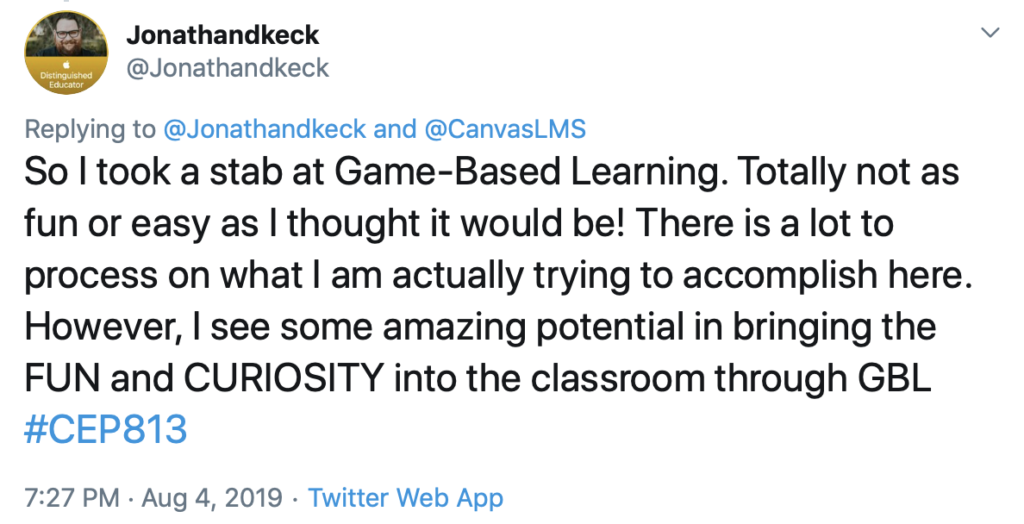
On the whole, this course on assessment has been deeply meaningful, insightful, and full of joyful “Ahhhhahhhha” ‘s and frustrated reflections on my practice. I walk from this course a better teacher, taking with me a more reflective questioning of the “whys” and “hows” of my classroom assessments.


REFERENCES
Hattie, J., & Timperley, H. (2007). The power of feedback. Review of Educational Research, 77(1), 81–112.
@jonathandkeck Twitter Thread
